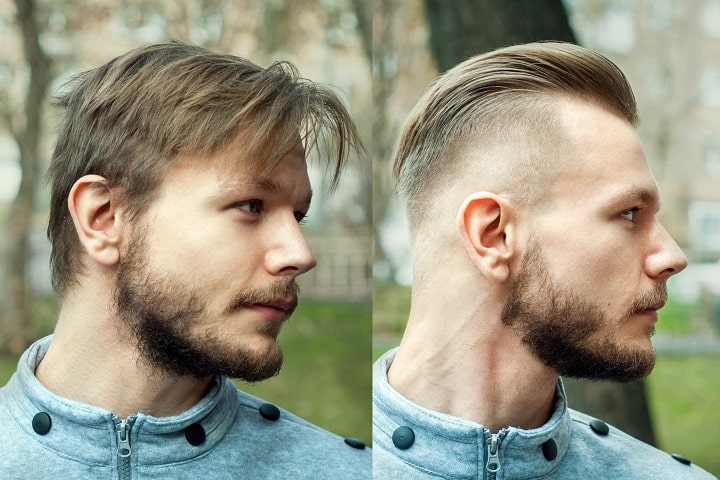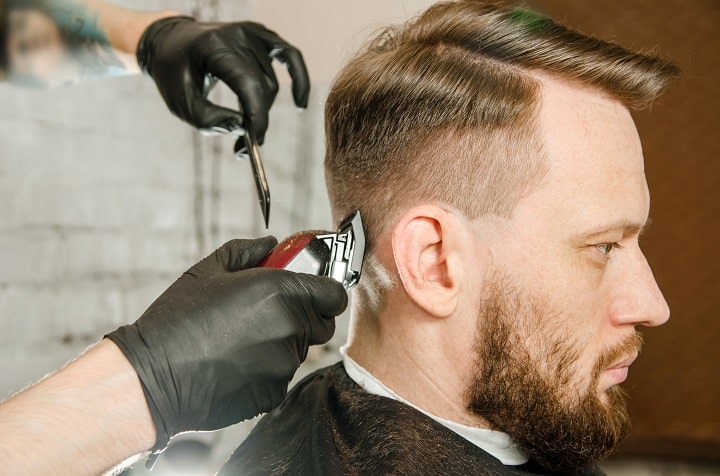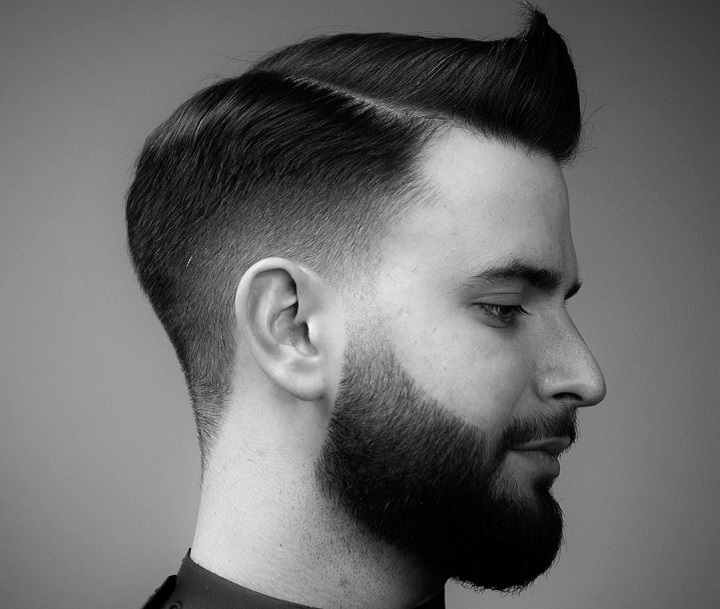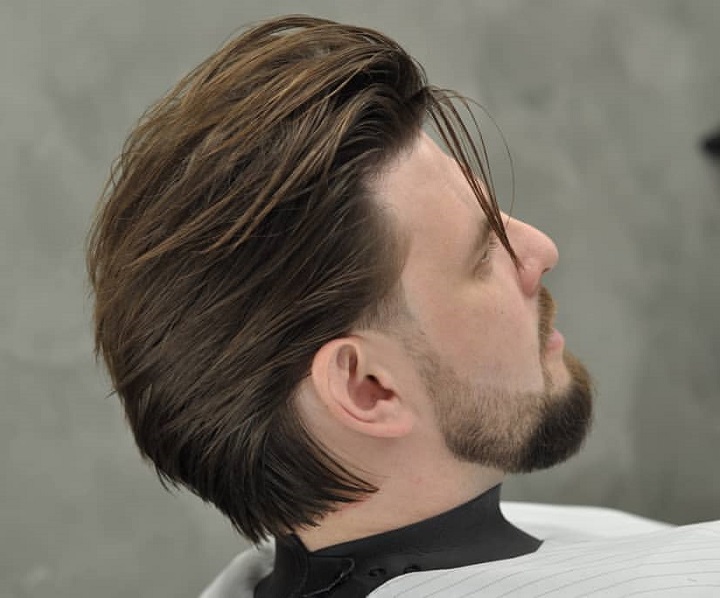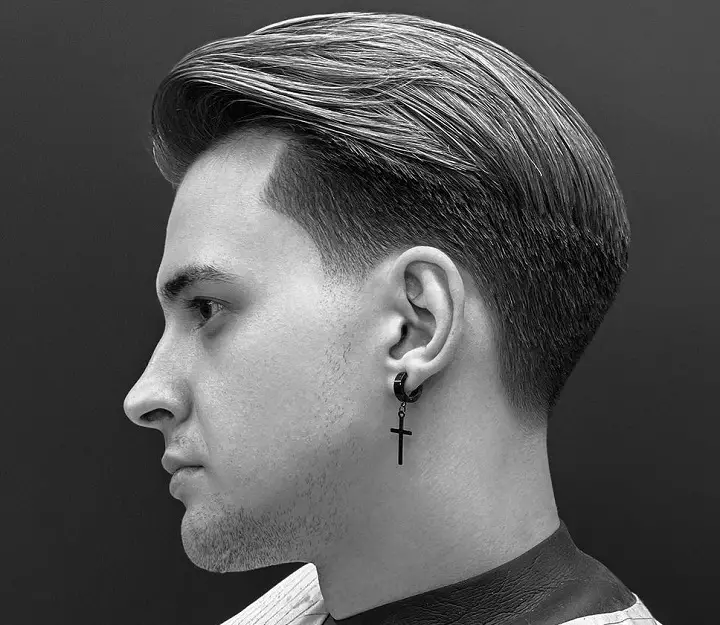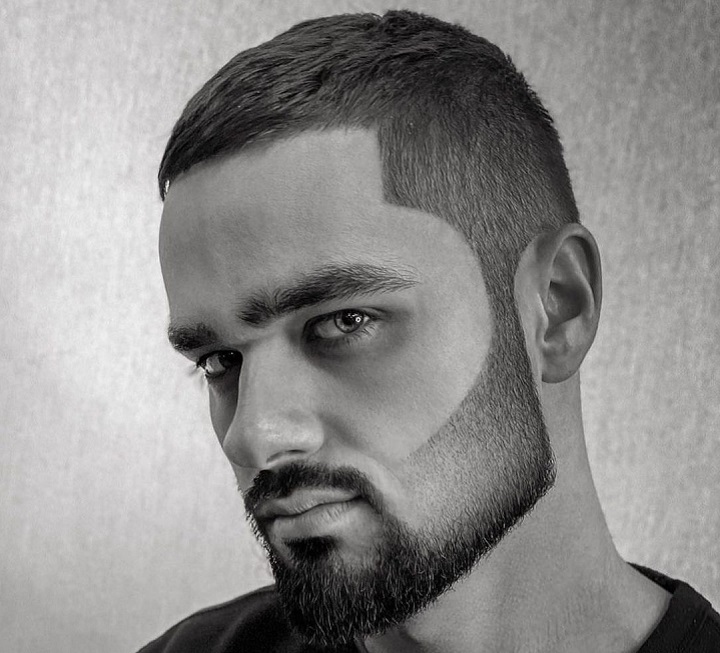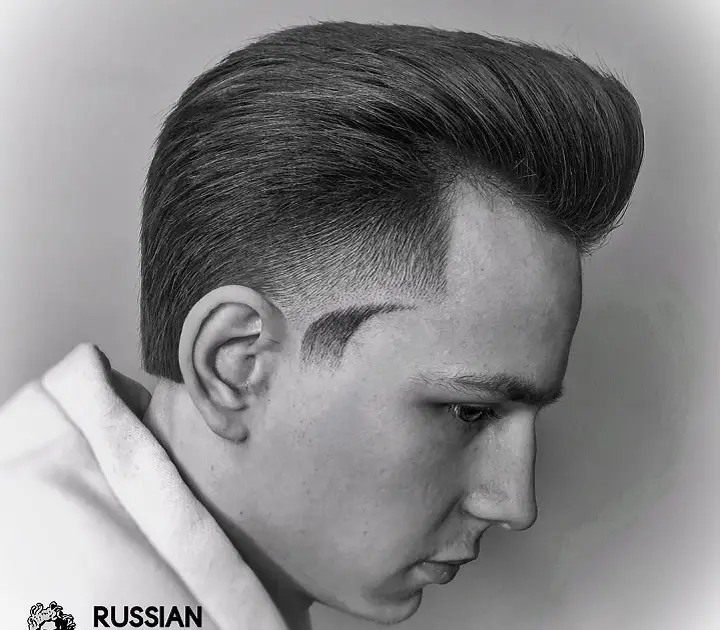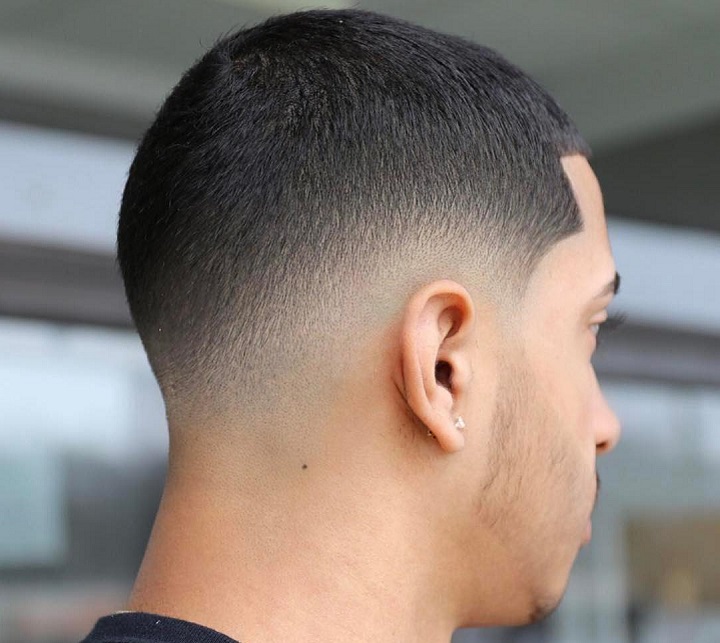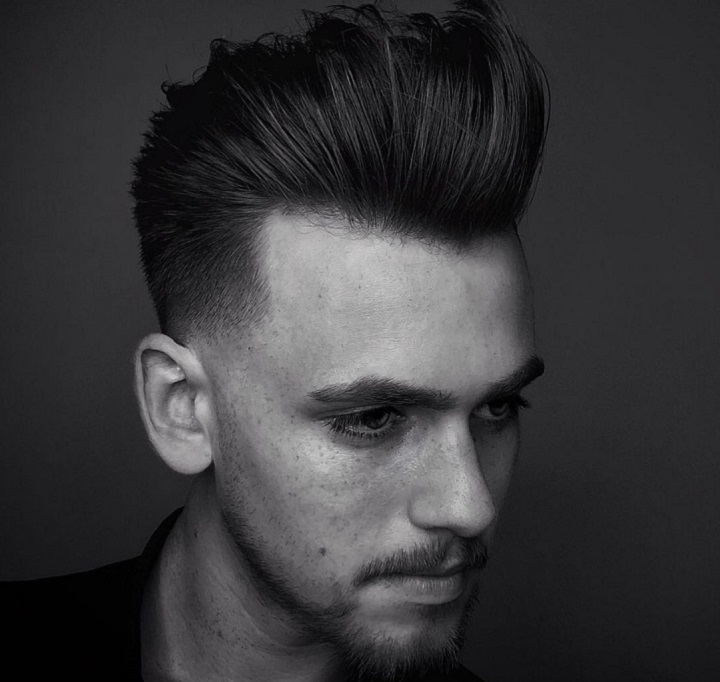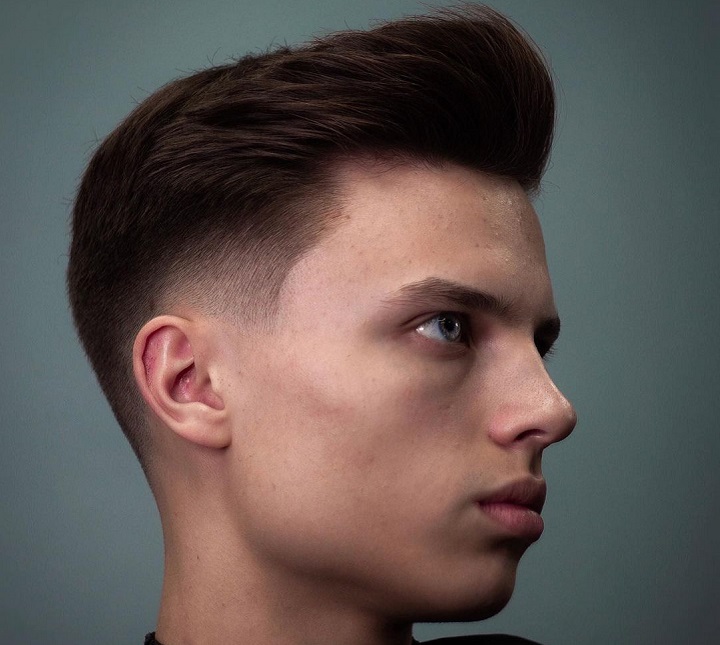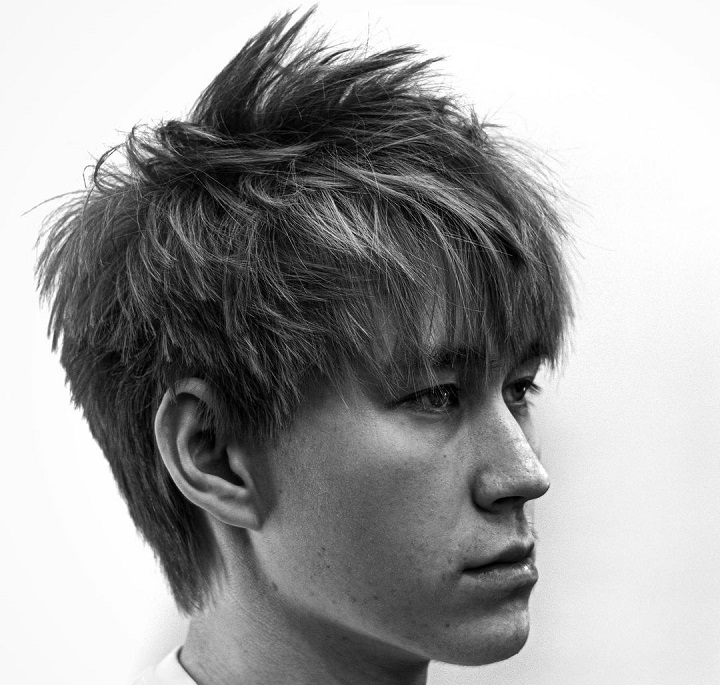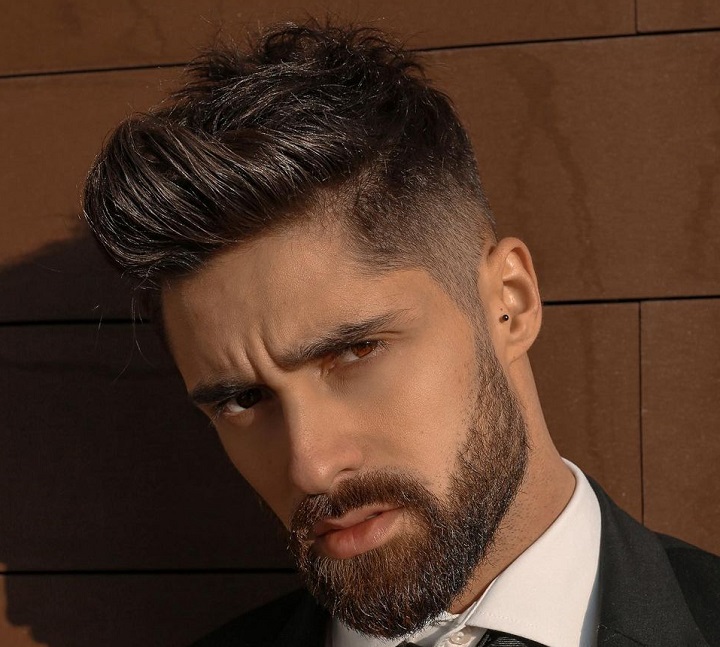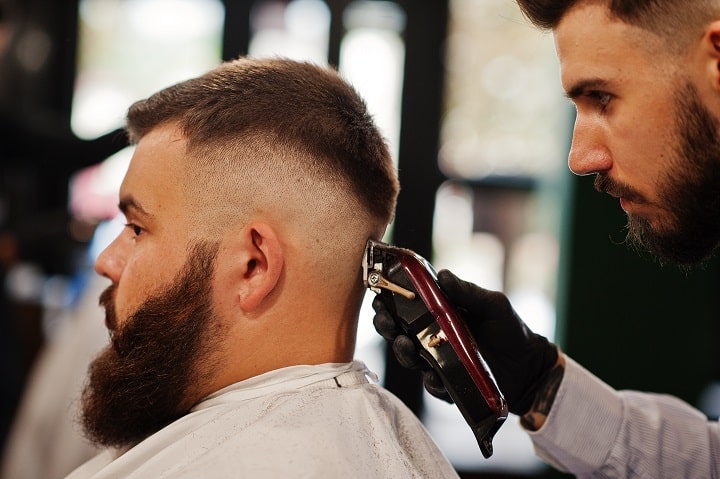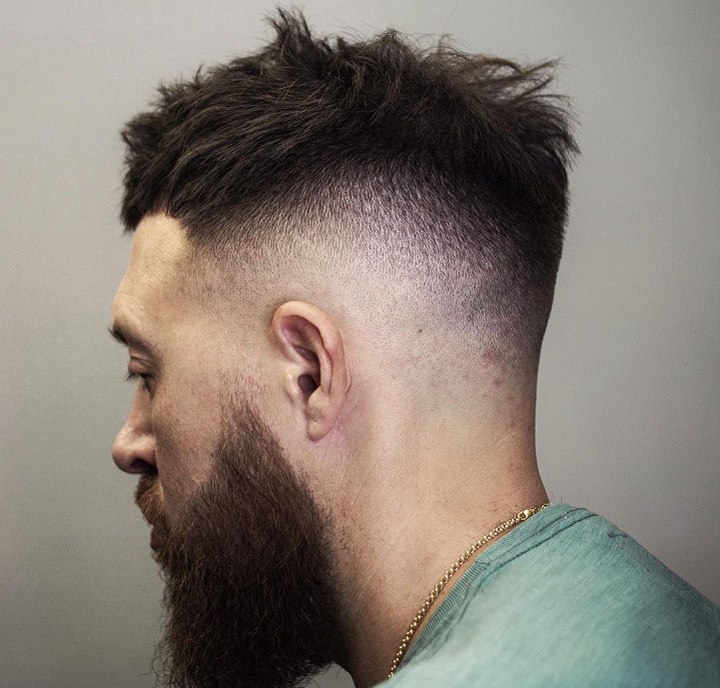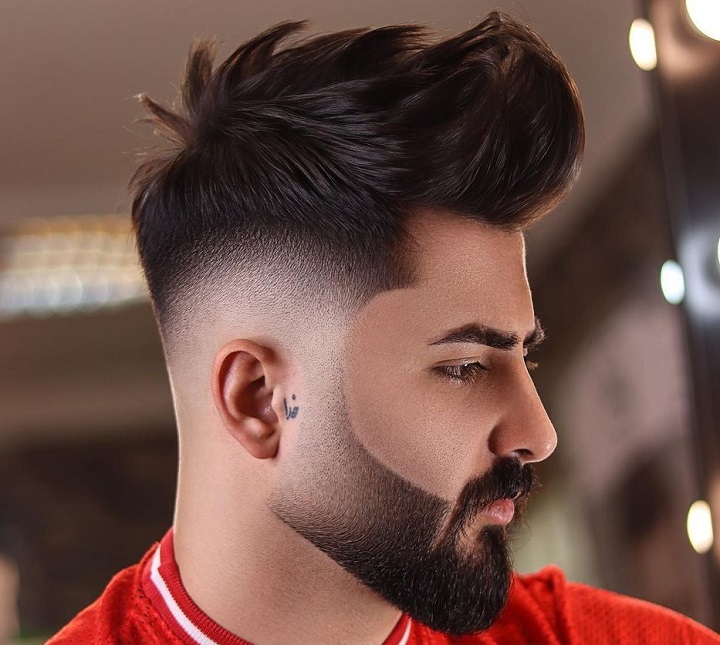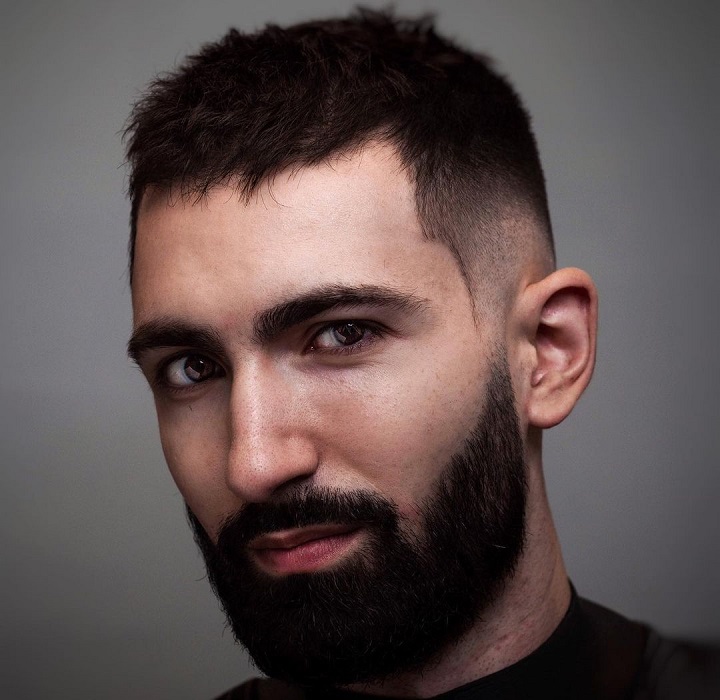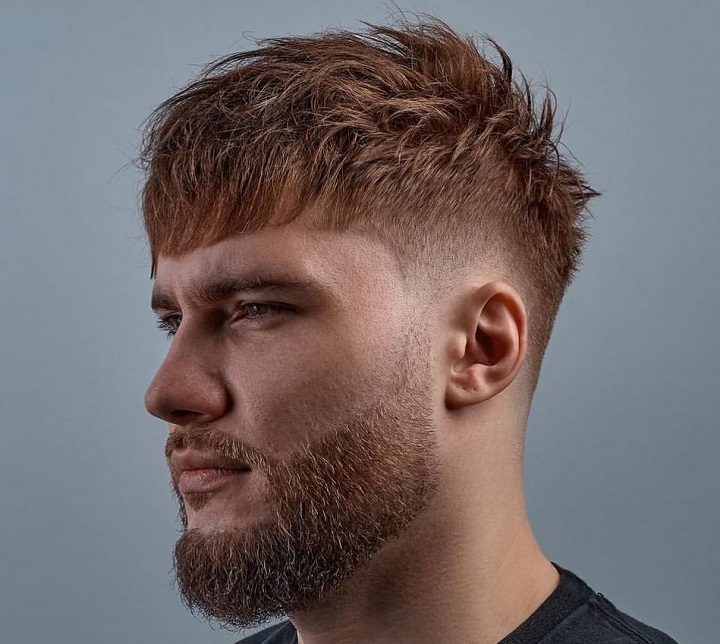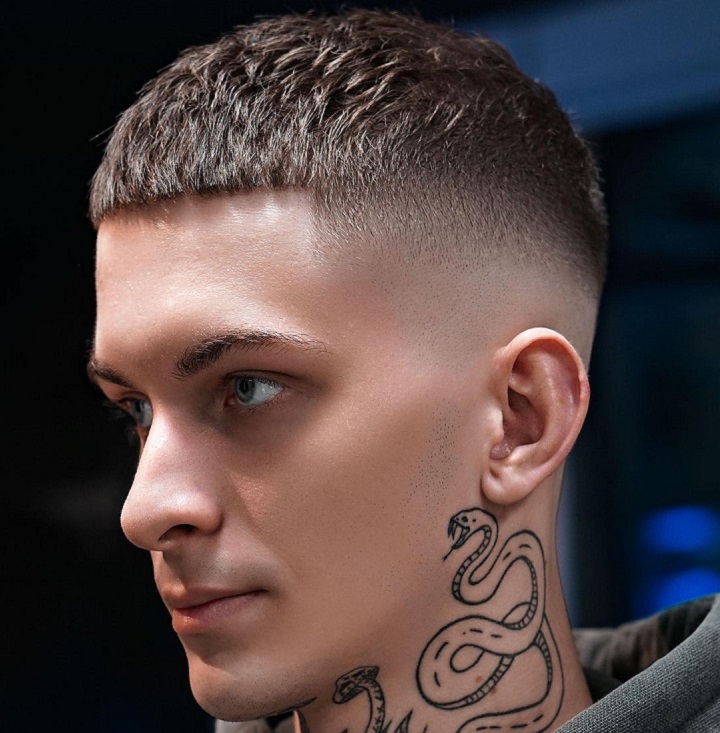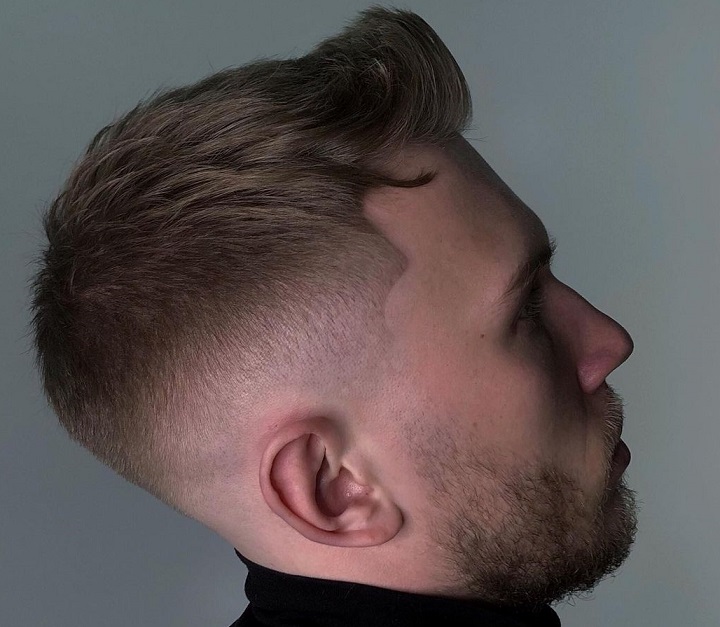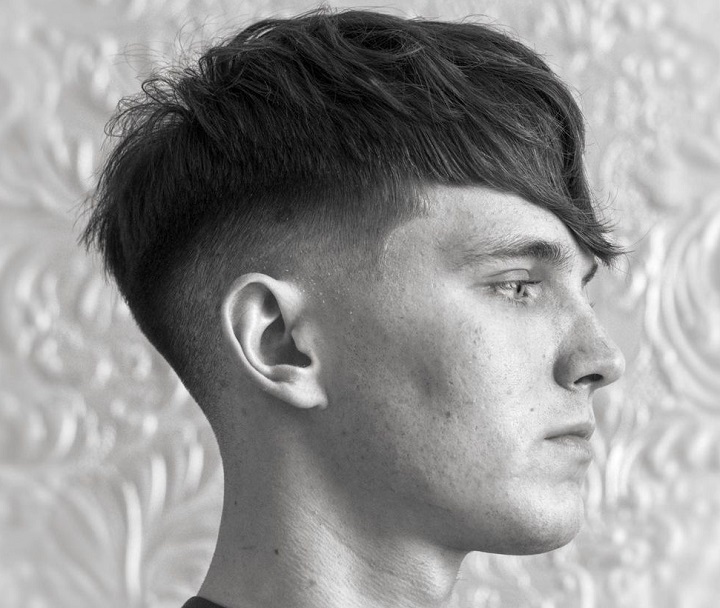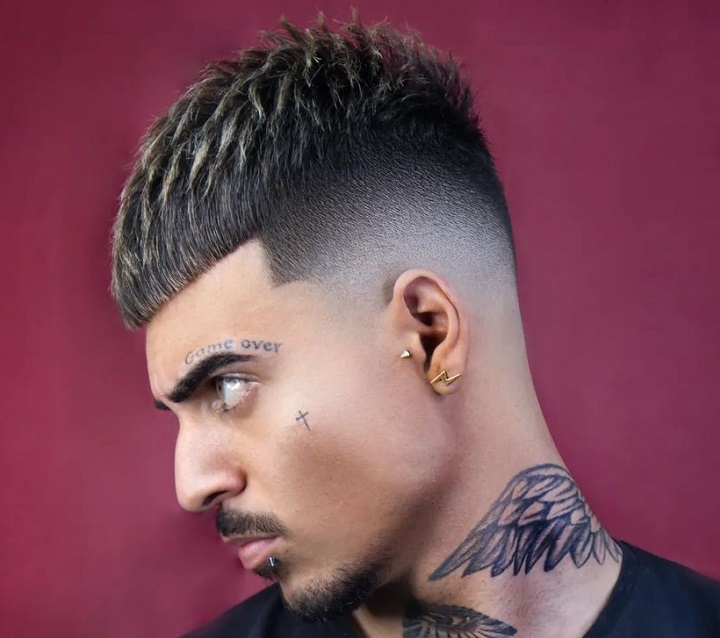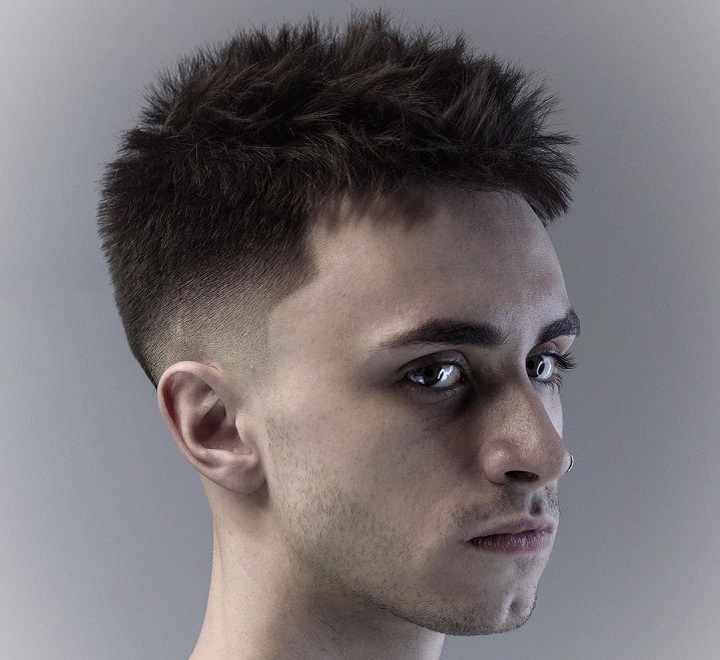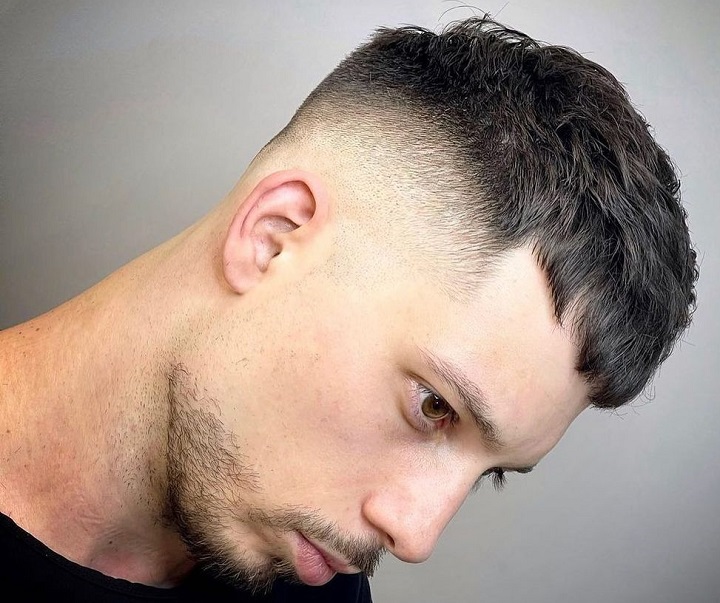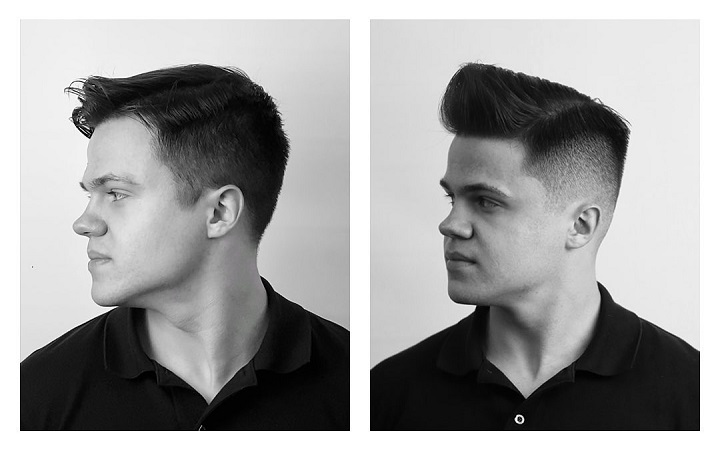Table Of Contents
- What Is a Taper
- Benefits of a Taper Haircut
- How Does Taper Work
- Pros and Cons of the Taper Haircut
- Types of Taper Haircuts
- How to Grow a Taper
- How to Maintain Your Taper
- 5 Most Popular Taper Styles
- What Is a Fade
- Benefits of the Fade Haircut
- How Does the Fade Work
- Pros and Cons of Fade Haircut
- Types of Fade Haircuts
- How to Grow a Fade
- How to Maintain Your Fade
- 5 of the Most Popular Fade Styles
- What Is a Taper Fade
- Types of Taper Fade Haircuts
- Taper vs Fade Comparison
- Short History of Taper and Fade Haircuts
- How to Choose Between Fade and Taper
- Do’s and Don’ts With a Taper and Fade
- FAQ
The taper vs fade debate is a never-ending question that never seems to get a satisfying response.
The two styles are what’s in now and both hold massive benefits to gaining a modern and hip look.
But, which one is better?
How to determine which one will look better on you?
These are the main questions you should be asking before going to a barbershop and getting a new haircut.
Taper or fade?
Both look extremely good on a guy.
However, you’re not just any guy, aren’t you?
Deciding which of the two to get shouldn’t be that hard, and we’ll show you how to pick.
We included everything there is to know.
You’ll walk away knowing how to distinguish the two styles and determine which one will look better on you.
The fun starts now.
What Is a Taper
A taper is a haircut wherein the hair gradually transitions from being extended to a shorter one. The change in length is often most noticeable in sideburns and the neckline. If you ask your barber for advice and any other information regarding the taper haircut, they will most likely inform you that with the help of powerful hair clippers, the cut will involve slowly blending or tapering the longer hair on top into the short hair surrounding the neckline and ears.
Benefits of a Taper Haircut
Ideal for a Classic Look
If you prefer a more classic look without leaving your hair too short, then consider getting a taper haircut. This style can make you feel more confident about yourself because it can showcase a great classic look.
Numerous Styling Options
The taper haircut also has the advantage of providing you with enough room for various styles while you grow out your hair. You can incorporate several styles in a taper, making it possible for you to create one without asking for it.
Many different types of taper haircuts determine how high or low you should start the taper.
Shorter Styling Time
The taper haircut gives you flexible and numerous styling options also means that the styling time will be shorter. This is convenient, especially if you do not want to spend a lot of time styling your hair and using the world’s best hair wax along the process.
How Does Taper Work
The tapered cut works by giving your hair a more extended cut on top then slowly shortening its length on the sides and back of your head. The typical taper usually comes with a length of around 2 to 4 inches on top, while your remaining hair will be shorter.
In most cases, the hairline surrounding the perimeter has a short cut but remains fully intact. It is also a style that works for both men and women.
Pros and Cons of the Taper Haircut
Pros
- Gives you a more classic look.
- Provides numerous styling options, making it a truly flexible haircut.
- Shorter styling time guaranteed.
- Prevents you from using too many hair products as it is easy to style.
- Works well for both men and women.
Cons
- It may still come with additional maintenance costs depending on your chosen taper style or variation.
Types of Taper Haircuts
Side Part Tapers
Photo @hair__sam
This tapered haircut boasts of a prominent side part. In this type, you will notice the hair being thick while slowly thinning out as it extends down to the ear. It is an excellent style if you want your professional look to be edgier. It is, therefore, a popular type of haircut for men in the business world.
Classic Tapers
Photo @vadim_shifrin_barber
In this classic style, you will notice the hair atop your head and on your crown being longer, then gradually tapering as it goes down to the back and sides.
Low Tapers
Photo @vadim_shifrin_barber
This style features a cut that begins to become shorter over the ears. It is an excellent cut capable of providing the hairline with a cleaner look without excessively cutting length. It is also perfect for anyone who wishes to avoid exposing their scalp.
Mid Tapers
Photo @mehdi_farahh
The focus of the mid-taper style is to blend the hair in the middle. It is not as edgy as the high taper, but it still has an excellent style that makes it perfect for business professionals.
High Tapers
Photo @vadim_shifrin_barber
High tapers begin close to the top of both sides. This results in more contrast between the longer top and the shorter sides. This stylish taper is a popular haircut that you can tailor even further using a lineup surrounding the hairline.
Short Tapers
Photo @barbersukraine
The short taper is typically hair that is one inch or lower, tapering down to the ear. It is the best for anyone who is not fond of having significant amounts of hair on top.
Faint Tapers
Photo @hair__sam
The faint taper may seem like the entire hair has the same length. However, you can also see a faint tapered effect surrounding the ears and temples. It is ideal for you if you wish to try the taper without making the style too dramatic.
Skin Tapers
Photo @dynasty_barbers
The skin taper is that style wherein the scalp becomes visible by shaving the hair near the skin. It is possible to get into a unique barber chair and have this skin taper style together with other tapers and cuts.
One example is getting the high taper style tapering into your skin. This cut is practical in the sense that it takes hair away from your face during warm weather. You may also use the skin taper as a means of spicing up any haircut.
Tapered Neckline
Photo @hair__sam
It is also possible to add a tapered neckline into a typical taper. The cut of your neckline can make your hair gain more personality. In this style, you can choose to obtain the design, classic, or disconnect neckline shape.
Also, expect the tapered neckline to look more natural as it grows. Blocked or rounded necklines need a bit more maintenance to retain their shape. If necessary, you may want to use a premium hair spray or strong hair gel in that case.
How to Grow a Taper
Step 1 – Cut the sides
With the help of hair clippers, your hairstylist or barber will buzz the sides at a number 1, 2, 3, or 4 setting, depending on your preferred shortness for the taper.
Step 2 – Trim the top
In most cases, this step will leave 2-inch hair or longer so you can style it based on your preference.
Step 3 – Decide where you intend the taper to start and end
This may be another decision you should make when growing a taper. One choice would be tight and long tapering that goes down to your neck. You may also go for a more subtle style by tapering just half of the side before getting into the targeted length.
Step 4 – Keep a clean and healthy scalp afterward
This can promote the growth of your taper after having this style. Make it a regular habit to cleanse your scalp to prevent the buildup of products that may clog your pores and prevent hair growth.
How to Maintain Your Taper
Step 1 – Get a trim
Note that a significant concern for growing a taper comes with uneven lengths between the crown and sides. This makes it necessary to get a trim every 4 to 6 weeks, making it possible for your haircut to look fresh, sharp, and defined.
Step 2 – Style it appropriately
The good thing about the classic taper is that you can easily style it using some hair products. Most styles also require you to add a bit of volume. If the volume is what you are after, then have the pompadour or the quiff hairstyle. Those who prefer simpler hairstyles can slick back their hair or have the combover style.
5 Most Popular Taper Styles
Classy Taper and Pompadour
Photo @soxib_barber1
In this classic haircut for men, you will just have to brush your thick hair straight back. The good thing about this taper haircut is that you can style it a bit more or add some pomade so you can integrate a slick back or pompadour.
Taper Cut and Sleek Combover
Photo @hair__sam
This one follows the taper comb over the haircut and features a sleek and slick take to it. It is a smart style that gives you a more professional look, ideal for formal events and business settings.
Voluminous Pomp and Taper
Photo @hair__sam
With this specific taper cut, you will understand what makes the taper different from the fade. This style leaves a substantial amount of hair you can’t see in a fade at the back and sides.
Classy Taper and Long Top
Photo @hair__sam
This style is just simple, but it works perfectly for you if your hair is kind of wavy and a bit unruly. With the help of this style, you can gain complete control of your hair.
Elegant Taper and Side Part
Photo @pier.vietto
You can also make your taper haircut even more elegant. You can make that possible by styling it with a side part.
What Is a Fade
The fade refers to a haircut characterized by not having any hair at the back of your head and both sides. The style, however, tends to graduate into more hair while moving atop your head. The fade is a type of hair tapering, with the difference being that the hair is drastically cut below the regular taper.
Benefits of the Fade Haircut
Readily Available
One advantage of the fade haircut is that you can easily access and get this style readily available. This cut has existed for some time now means that almost all barbers can give you such a haircut. The reason is that they know this style very well, so regardless of where you decide to get this cut, you will surely be able to receive it.
Versatile
The fade is versatile in the sense that it can fit anyone regardless of their hair type. The versatility of the fade also allows you to experiment with several styles in case you grow your hair long. Moreover, it looks good in almost all facial shapes.
Easy to Incorporate Into Other Haircuts
This allows you to find a particular hairstyle with a fade-in it that you genuinely like. Fades are also ideal for you if you prefer to have a clean and fresh look.
How Does the Fade Work
The fade works by starting from being long then going to short, but typically, it tends to become short as it goes to the bottom, then fading into your skin. The usual fade slowly changes the length of the hair around your head. It also works by making the change starting from the long hair to short even more dramatic.
Pros and Cons of Fade Haircut
Pros
- Readily available in almost all barbershops and salons.
- Highly versatile style.
- Easy to incorporate into other hairstyles or cuts.
- Fits almost all facial shapes.
- Works for everyone, no matter what their hair type is.
Cons
- Kind of high-maintenance as it requires you to visit your barber regularly.
Types of Fade Haircuts
Bald Fade
Photo @hair__sam
This specific cut can be expected to taper down starting from the top. Also, it is necessary to shave off the hair surrounding the perimeter of the back and sides of your head. This style is as recognizable as the famous goatee that also tends to gain a lot of favorable attention because of how good it looks.
Faux Hawk Fade
Photo @mehdi_farahh
This type of fade haircut comes with long hair in the middle, similar to a Mohawk. However, instead of shaving the sides, you will notice it being tapered down slowly to create the fade.
High-Top Fade
Photo @loonyborz
The high-top fade showcases a box cut on top of your head then fades down around your head’s whole parameter. You can expect the hair surrounding the perimeter to have gradual or significant tapering. It became popular from the 80s to the early 90s and regained attention again, especially in teens and hipsters.
Mid Fade
Photo @hair__sam
The mid fade, otherwise referred to as medium fade, starts in the middle of your head. Choose this cut if you can’t decide whether you should go for a low or high fade.
Low Fade
Photo @barbersukraine
The low fade is the ideal choice if you prefer hairstyles with a medium to long length. Such a length requires a coarser appearance. It is also the best choice if you wish to go for classic styles or work in a corporate office.
Skin Fade
Photo @loonyborz
Quite the same as the skin taper, this style involves shaving your hair close to your skin. You should then stop before reaching your natural hairline. You can get the skin fade style while retaining the top long enough so you can get a pompadour or quiff. The skin fade tends to look even better for styles that involve short cuts.
Drop Fade
Photo @hair__sam
The drop fade refers to a fade dropping below your ears then following your head’s shape. It needs a bit more maintenance to preserve the contrast as it starts growing out. It is also possible for you to do some sort of maintenance at home in between your scheduled visits to your barber.
Undercut Fade
Photo @hair__sam
This type of fade comes with a blurry fade, which is cut typically high over your ears. It is the perfect style for those who have long hair as it allows you to display differences in length. Any disconnected cut or hard part can even provide more edge to the classic look.
How to Grow a Fade
Step 1 – Pick a fade line
You can choose the one that is directly over your ears or at your temple. Note that you are allowed to go as high as you desire, provided there is still some hair that’s long enough on top.
Step 2 – Begin by cutting the sides
You should do the cutting on the sides one at a time. For your fade’s topmost layer, make it a point to pick the long trimmer attachment, like #4 or #5.
Step 3 – Replace the attachment with either 3 or 2
Use it in trimming the sides just beneath your first created line – the one where you use the higher trimmer attachment.
Step 4 – Continue cutting or trimming up to the back
If possible, look for someone who can assist you in this step. If you are doing this independently, get a mirror and use it to do the back portion slowly.
Step 5 – Cut simply using one attachment
The reason is that keeping to a few lines is kind of complex at the back.
How to Maintain Your Fade
Step 1 – Trim overgrown hairs
You can often find these hairs on top. Just do minor touch-ups on such hair so you can retain the dapper look of the fade haircut, whether it is the crew cut fade or any other style you are wearing.
Step 2 – Make it a point to shave if you have facial hair
The reason has facial hair means you should not only focus on maintaining your fade. Note that overgrown hair around your ears, eyebrow, and neck may only drown your chosen fade haircut, so make it a point to shave regularly.
Step 3 – Brush properly
It also helps to prioritize removing knots instead of the number of minutes or strokes you have brushed. Moreover, it is important to use the correct brushing technique and the actual brush.
5 of the Most Popular Fade Styles
Bald Fade and Short and Spiky Top
Photo @legendary.barber
This is a famous fade style that you can perfectly integrate into a short hairstyle. It is an incredible style for someone who prefers to make his hair look tidy and neat.
High Fade and Slick Back
Photo @barber.b.take
Are you looking for a more sophisticated look? Then the high fade and slick back combination is the perfect choice for you. You can feel more confident wearing this hairstyle because of the air of elegance and sophistication it brings to your aura.
Bald Fade and Beard
Photo @soxib_barber1
One impressive fact about getting the fade cut is that it is also possible to wear it with your facial hair. The result will not appear too overwhelming as you have an assurance that the sides will become short and nice.
Fade and Spiky Medium Hair
Photo @hair__sam
You can choose this popular fade style if you prefer getting a spikier cut. You can achieve such a style by picking the mid fade to make your look less contrasting. Alternatively, you can get the bald fade to create a sharper contrast.
Short Crop and Fade
Photo @barbersukraine
This is also a new flexible hairstyle perfect for you if you prefer a more modern look. It is a practical and trendy style that will surely bring out your confidence.
What Is a Taper Fade
A taper fade refers to a cut going from one to another length. It could be from the top of your head to your sides or your nape. In most cases, this style begins long then becomes shorter as it goes to the end. While a typical fade causes the hair to merge and disappear, the taper fade, on the other hand, will leave the hair shorter. It also blends it subtly to produce a more groomed effect.
Types of Taper Fade Haircuts
Taper Fade Comb Over
This style often requires you to form a high taper fade, shortening hair by a few inches over your ears. You can then pair it up with the comb-over style and the modern high tops, adding more visual contrast to the look.
Classic Taper Fade
This style is a classic that many fall in love with. Here, you will notice the hair is clipped short. However, it is not to the point that it goes down to your skin. You can also see it featuring an extraordinary and medium length on top.
Faux Hawk Taper Fade
In this specific taper fade style, you will be using the additional length on top to add more height in front. You will notice the sides tapering and fading in length, similar to the level of the classic fade, between your ears and temples.
Taper vs Fade Comparison
Photo @anthonythebarber916
Length
Both the taper and the fade are known for being gradients from long to short hair. Having the longest one on top, it has been discovered that the taper is longer overall. Note, though, that the tapering, in this case, is usually subtle. It is subtle to the point that it only affects the sideburns in some cases.
You should know that the fade is not even all the time, making it different from the tapered cut. You will also notice an instant transition from long to short hair at the back and sides. This is opposed to the slow reduction in length, which you will most likely expect from a taper. When it comes to fades, especially the skin fade, you will realize that it involves shaving down the shortest hair at the back and the sides of your skin.
Blend
One more major difference between the fade and the taper is the manner of blending them. The tapered cut usually becomes shorter, starting from the top then down to the bottom. It also directs the taper to the bottom then stops right after noticing that the skin is almost reached.
Meanwhile, the fade begins to become dramatically shorter until you notice that the hair gets blended as a means of showing it to your skin. In most cases, high fades also begin at the temples, while the low fade starts at around an inch over a man’s ear.
Short History of Taper and Fade Haircuts
The taper and fade haircuts started in the 40s and the 50s. Their roots can be traced in the US military by that time. The two haircuts were reborn in the 80s and 90s as famous people like Grace Jones and Doug E Fresh started wearing them. It was in the early 2000s when the fade also became more popular in mainstream media.
How to Choose Between Fade and Taper
Photo @igrik.cut
Boldness
When it comes to choosing between the fade and the taper, the boldness of the cut or style should be one of the things you have to consider before making the final decision. The tapered haircut is more traditional compared to the skin fade. It is also less bold.
If you do not like the idea of showing any skin on your head, then pick a hairstyle that integrates a taper. You can also sport this look if you want to appear modest and classic. Meanwhile, you will notice that the skin fade is much bolder compared to the tapered.
While it is possible to do the skin fade in just a few minutes, it is crucial to note that low fades have the most similarities to the taper. Such fades will be able to display more skin as well as the angles of your face.
Face Shape
Another important factor to consider is the shape of your face. Note that various facial shapes and hairstyles can flatter each type or incorrectly accentuate it. It would be better to go for the medium fade for the skin fade if you have an oval-shaped face.
If your face is square, then the best style for you is a high fade that features well-blended sideburns. The reason behind this style is that it works in highlighting the symmetry of your facial shape.
For those with round faces, you can expect to benefit from wearing a medium fade at the back and the sides of the majority of hairstyles. This allows it to balance your head’s roundness.
Do’s and Don’ts With a Taper and Fade
Do’s
- Use products for safe hair growth. Note that for your taper and fade to look great, it is crucial to look for products that can help encourage hair growth during your journey. Ensure that the products are safe and organic to avoid damaging your hair. The products should also help in stimulating blood flow circulation, allowing the scalp to foster.
- Trim regularly. Do not forget to trim your taper and fade. The reason is that it can help prevent your hair from growing unevenly. It is, therefore, the key to getting a uniformed yet not awkward look.
- Pick a length based on your facial shape. For instance, if your face is elongated or oval-shaped, it is crucial to avoid having excessively long hair on top. For square or round facial shapes, adding too much volume on your sides may result in your face looking fuller at the cheeks.
Don’ts
- Do not forget to protect your hair before sleeping. To preserve the great look of a taper and fade, it is advisable to protect it before you sleep. You may want to put on a leave-in conditioner or use a satin or silk wrap designed to wrap your hair before sleeping.
FAQ
Should I get a taper or a fade?
The answer to this will largely depend on you and your perspective and preferences. However, if you could not use any of the two styles mentioned, it would be best if you started with the taper. This will allow you to style your hair into a full fade if you want a more modern and sleeker look.
Is drop fade a taper fade?
The drop fade is considered as the modern variation of the famous classic fade. It is all about cutting the drop fade low behind your ears. This can result in a taper. With its curved shape, you can expect your hairstyle to look even more natural.
Are tapers and skin fades capable of going with any style?
The answer is yes. Note that the skin fade and the taper just define the nature through which your hair’s length changes while going up to the back and sides. That said, you can do anything you like with your hair on top, allowing you to style it based on occasion and your preferred output.
How often should I get a taper?
If your classic long tapers appear on your sides and feature a cut on top that is medium in length, then expect a bit of longer hair to be unnoticeable. Generally, the number of times or frequency through which you can get a taper will depend on the length of hair, style, and budget.
What do I tell my barber for a taper?
If you prefer a taper, then begin by asking and requesting this hairstyle from your barber. It would be best to relay the need for a higher buzz cut without any fade surrounding your ears, neckline, back, and sideburns.
After that, specify your preferred taper line, the specific spot where your taper should start and end. You can also choose from the low, mid, and high tapers.
What do I tell my barber for a fade?
The fade haircut is often classified as the perfect choice for the risk-takers and the ultra-hip. It would be best to begin by telling your barber about your need to have a fade haircut. You should then inform him about your preferred depth, such as a skin fade. After that, notify the barber of the exact fade line, which refers to your fade’s start and the end. You can also choose from the low, mid, and high tapers.
Anthony Giannotti is a senior writer and editor for Beardoholic and a licensed barber for more than 13 years. He owns 3 barbershops and has his own hair care product line that is sold in barbershops worldwide. Known for his impeccable technique and skills, Anthony is an expert in hair and beard care and he knows the best products and tools to get rid of all beard problems and have an amazing beard.

